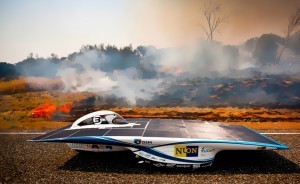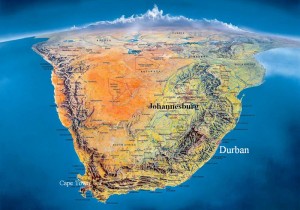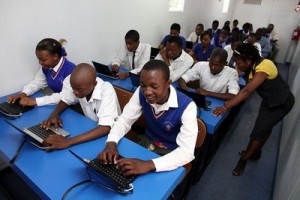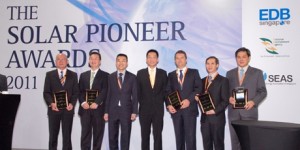 You’ve heard the argument before and no doubt you’ll hear it again and again. Solar is just too expensive. But last week Secretary of Energy Steven Chu highlighted the choice America faces on whether or not to take advantage of the huge economic opportunity and compete with countries like China in the clean energy race. He said, ““Once again, there is a huge opportunity before us – a global clean energy market that is already worth an estimated $240 billion and is growing rapidly. In fact, a very reasonable estimate is that solar photovoltaic systems alone represent a global market worth more than $80 billion this year.”“China – like many countries – has learned from the U.S. how government can support critical emerging industries. Last year, China offered roughly $30 billion in government financing to its solar companies, including $7 billion to Suntech. At least 10 countries have adopted renewable electricity standards, and more than 50 countries offer some type of public financing for clean energy projects. For example, Germany and Canada operate government-backed clean energy lending programs, and in the last several months, the UK, Australia, and India have announced plans to do the same.”
You’ve heard the argument before and no doubt you’ll hear it again and again. Solar is just too expensive. But last week Secretary of Energy Steven Chu highlighted the choice America faces on whether or not to take advantage of the huge economic opportunity and compete with countries like China in the clean energy race. He said, ““Once again, there is a huge opportunity before us – a global clean energy market that is already worth an estimated $240 billion and is growing rapidly. In fact, a very reasonable estimate is that solar photovoltaic systems alone represent a global market worth more than $80 billion this year.”“China – like many countries – has learned from the U.S. how government can support critical emerging industries. Last year, China offered roughly $30 billion in government financing to its solar companies, including $7 billion to Suntech. At least 10 countries have adopted renewable electricity standards, and more than 50 countries offer some type of public financing for clean energy projects. For example, Germany and Canada operate government-backed clean energy lending programs, and in the last several months, the UK, Australia, and India have announced plans to do the same.”
 On November 17, Steven Chu, has agreed to testify about the failed solar energy company Solyndra before congressional investigators on the House Energy and Commerce Committee. Solyndra received a $535 million loan guarantee from the Department of Energy. Chairman of the Committee Rep. Cliff Stearns said in a statement. “We hope he will finally provide answers about why DOE consciously ignored the direct warnings from their own experts that Solyndra was doomed to fail, and granted the loan to Solyndra.” Congress has issued a subpoena to the White House, with the White House refusing to comply stating it has already released over 80,000 pages to Congress.
On November 17, Steven Chu, has agreed to testify about the failed solar energy company Solyndra before congressional investigators on the House Energy and Commerce Committee. Solyndra received a $535 million loan guarantee from the Department of Energy. Chairman of the Committee Rep. Cliff Stearns said in a statement. “We hope he will finally provide answers about why DOE consciously ignored the direct warnings from their own experts that Solyndra was doomed to fail, and granted the loan to Solyndra.” Congress has issued a subpoena to the White House, with the White House refusing to comply stating it has already released over 80,000 pages to Congress.
Now New York Times Columnist Paul Krugman ways in, “We are, or at least we should be, on the cusp of an energy transformation, driven by the rapidly falling cost of solar power. That’s right, solar power. If that surprises you, if you still think of solar power as some kind of hippie fantasy, blame our fossilized political system, in which fossil fuel producers have both powerful political allies and a powerful propaganda machine that denigrates alternatives.” Read the full article: Here comes the sun.
Transforming ourselves transforming our energy
Audio clip: Adobe Flash Player (version 9 or above) is required to play this audio clip. Download the latest version here. You also need to have JavaScript enabled in your browser.
















